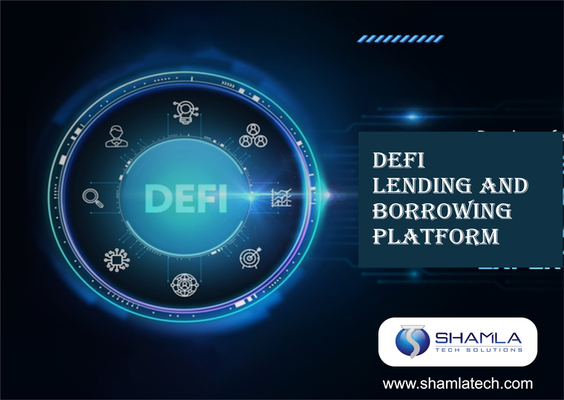- 1-905-452-8193
- Contact Us
- Member Login
- Get Listed Today
- 220,911 members

Decentralized Finance, or DeFi, has been a game-changer in the world of finance, offering an alternative to traditional financial systems that rely on centralized institutions. One of the most popular use cases of DeFi is lending and borrowing, where users can lend and borrow digital assets without relying on intermediaries. In this article, we'll explore the DeFi lending and borrowing platform development, covering the necessary steps to build such a platform.
What is DeFi Lending and Borrowing Platform?
DeFi lending and borrowing involve borrowing and lending digital assets using a blockchain-based platform without the need for intermediaries. The lending and borrowing process is automated through smart contracts, which are self-executing contracts that automatically execute the terms of an agreement once certain conditions are met.
In a DeFi lending and borrowing platform, users can lend their digital assets and earn interest on their deposits, while borrowers can borrow these digital assets by providing collateral. The interest rates are determined by the supply and demand of digital assets, and the collateralization ratio is set by the platform.
DeFi Lending and Borrowing Platform Development
DeFi lending and borrowing platform Development requires the following steps:
Step 1: Choose the Blockchain Platform
The first step is to choose a blockchain platform to build your DeFi lending and borrowing platform. Ethereum is the most popular blockchain platform for building DeFi applications, but there are also other blockchain platforms like Binance Smart Chain, Polkadot, and Solana.
Step 2: Design the Platform Architecture
The platform architecture should be designed to ensure that the platform is secure, scalable, and easy to use. The platform should be designed to handle a large number of users and transactions, and smart contracts should be audited to ensure that they are secure and free from vulnerabilities.
Step 3: Develop Smart Contracts
Smart contracts should be developed to automate the lending and borrowing process. The smart contracts should be designed to handle the lending and borrowing of digital assets, the calculation of interest rates, and the liquidation of collateral in case of default.
Step 4: Develop the User Interface
The user interface should be developed to make the platform easy to use. The user interface should be designed to enable users to lend and borrow digital assets, monitor their deposits and borrowings, and view their transaction history.
Step 5: Integrate with External Services
The platform should be integrated with external services like price feeds and wallets to ensure that the platform is up-to-date with the latest market data and that users can easily access their digital assets.
Step 6: Test the Platform
The platform should be thoroughly tested to ensure that it is secure, reliable, and easy to use. The platform should be tested using various scenarios, and smart contracts should be audited to ensure that they are secure and free from vulnerabilities.
Conclusion
DeFi lending and borrowing platform development requires careful planning and execution to ensure that the platform is secure, reliable, and easy to use. By following the steps outlined in this article, you can create a DeFi lending and borrowing platform that enables users to lend and borrow digital assets without relying on intermediaries. With the popularity of DeFi on the rise, the demand for DeFi lending and borrowing platform development is only expected to grow, making this a lucrative opportunity for developers and entrepreneurs.
